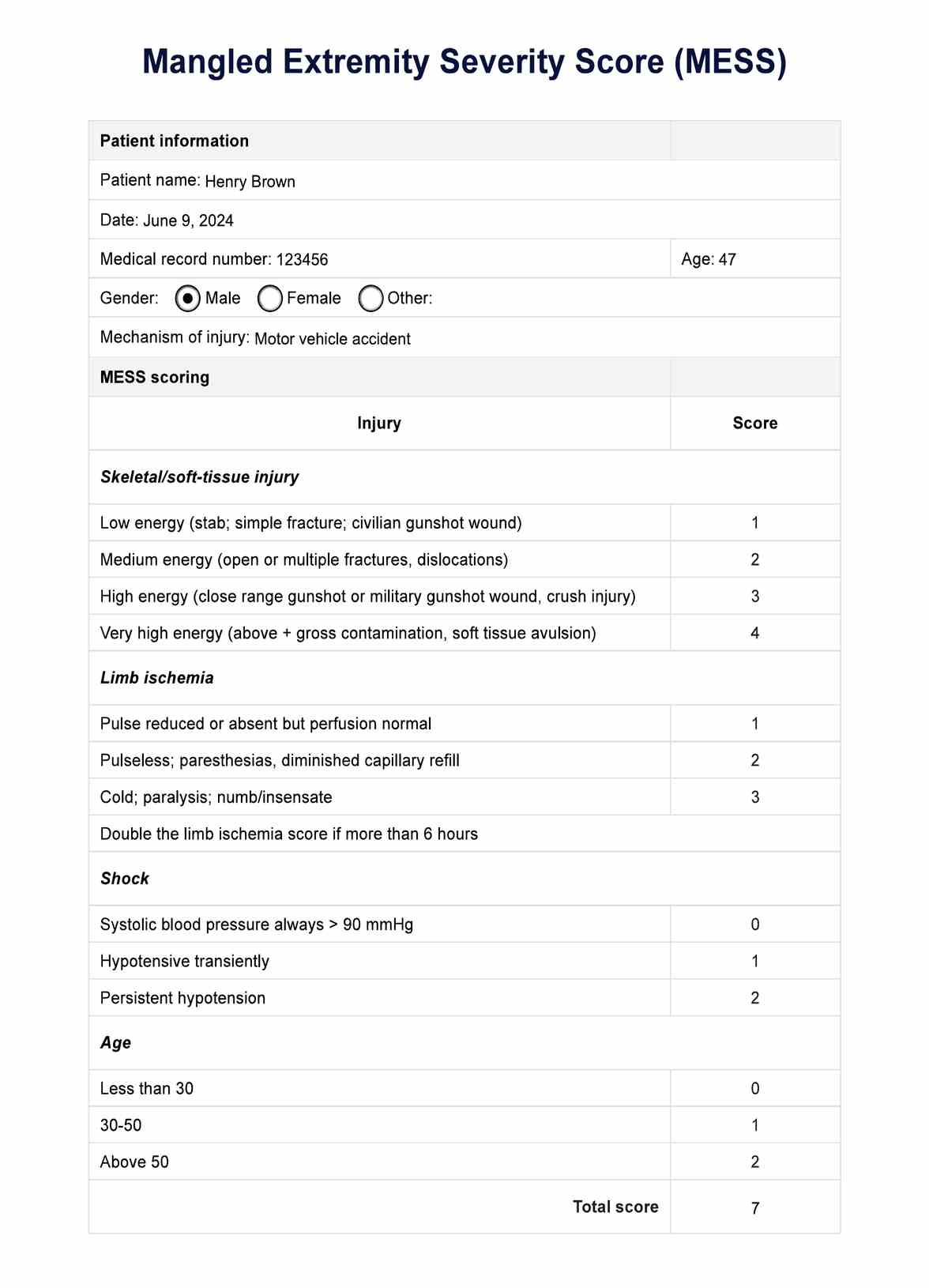The cut-off for the Mangled Extremity Severity Score (MESS) is 7. A score of 7 or higher suggests a high likelihood of amputation.

Mangled Extremity Severity Score
Learn more about using the Mangled Extremity Severity Score to assess trauma & plan treatment. Comprehensive guide and free template here.
Use Template
Mangled Extremity Severity Score Template
Commonly asked questions
The criteria for a mangled limb include severe damage to skeletal structures, extensive soft tissue injury, significant vascular injury, and possible nerve damage, often resulting from high-energy trauma.
The Mangled Extremity Severity Score (MESS) is a clinical tool used to assess the severity of limb injuries. It evaluates skeletal and soft tissue injury, limb ischemia, shock, and patient age to predict the need for amputation.
EHR and practice management software
Get started for free
*No credit card required
Free
$0/usd
Unlimited clients
Telehealth
1GB of storage
Client portal text
Automated billing and online payments











